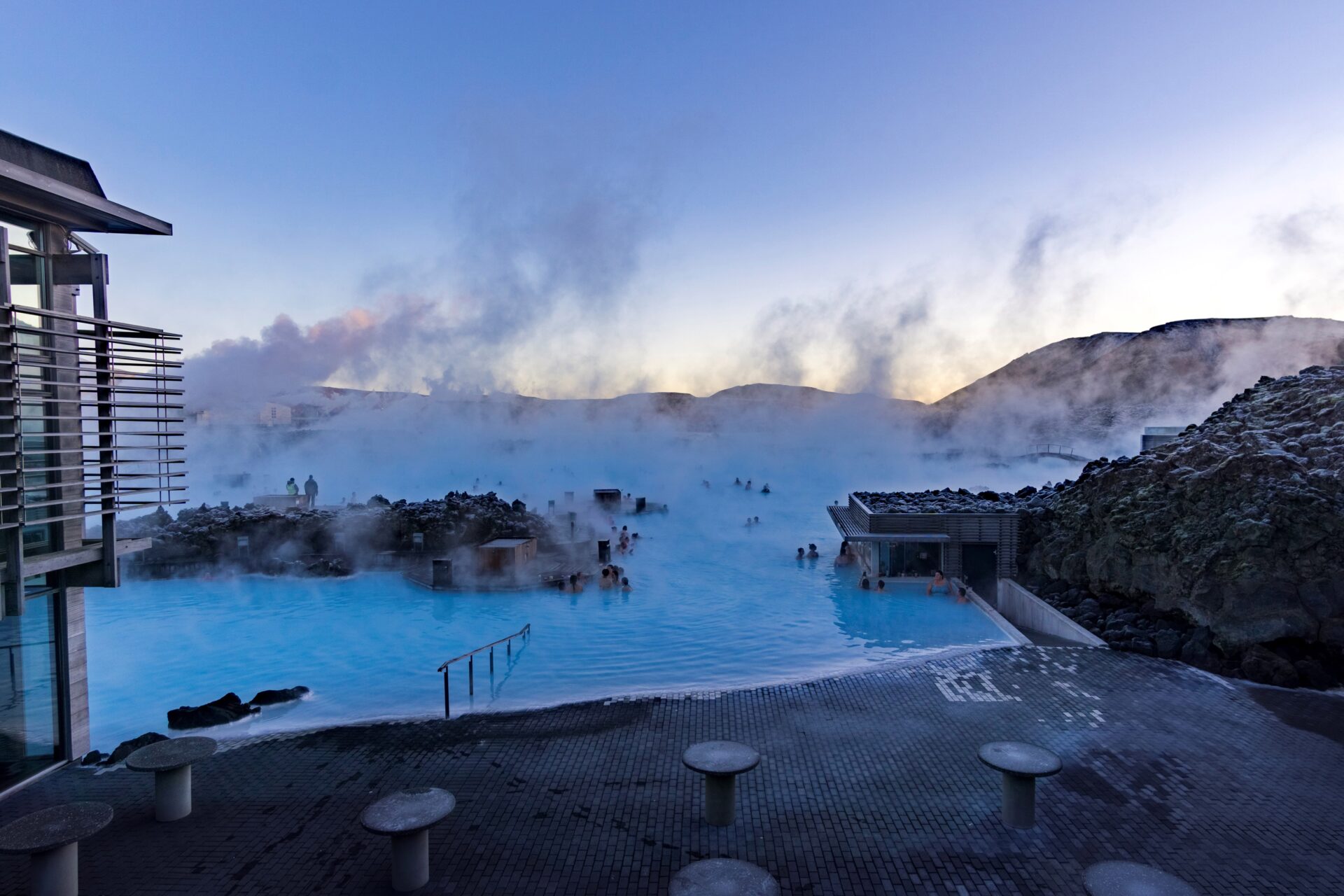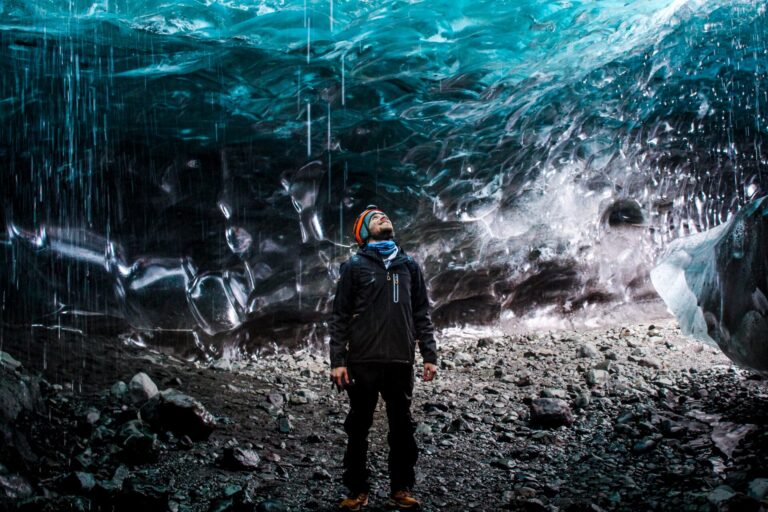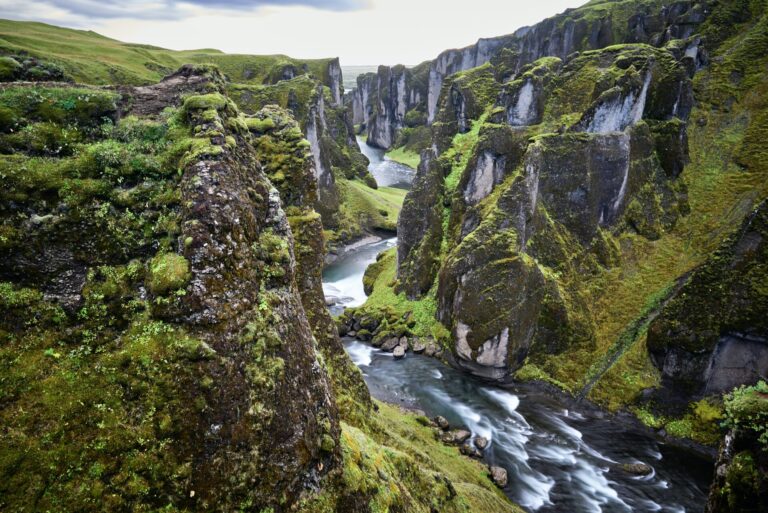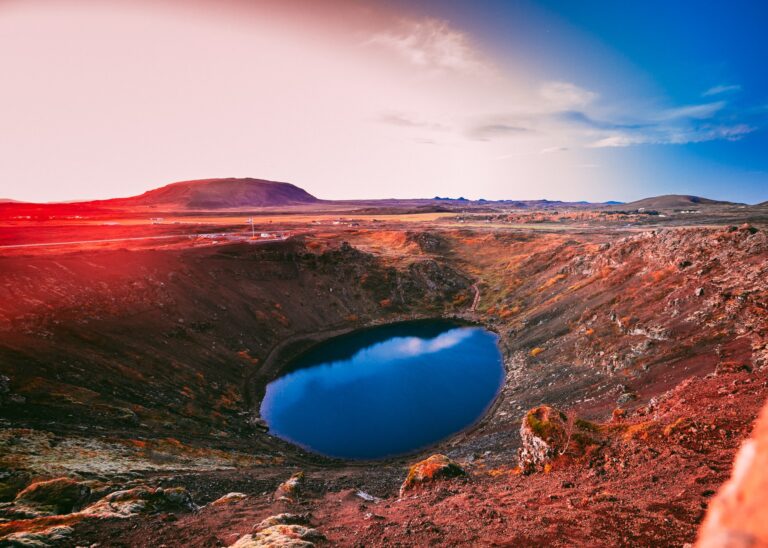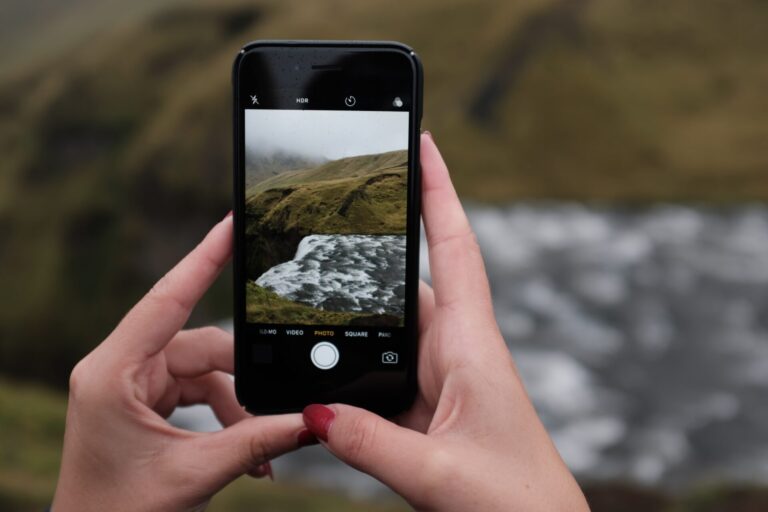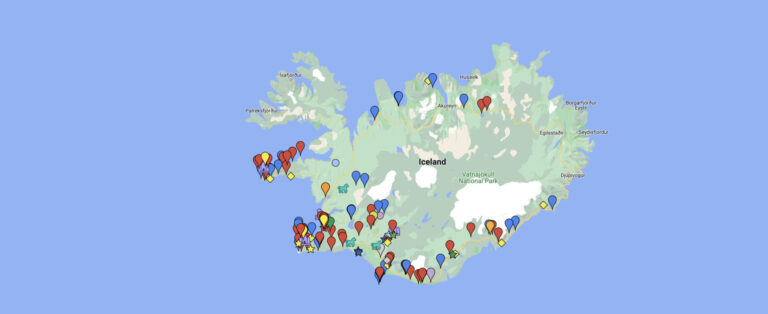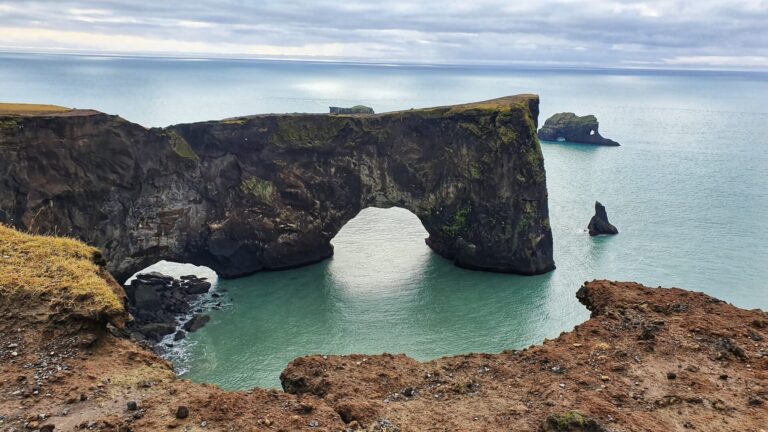Travel guide to the Blue Lagoon Geothermal Spa in Iceland
If you’re planning on visiting Iceland, one of the must-see attractions on your Iceland Attractions Map is the Blue Lagoon Geothermal Spa. Located in the Reykjanes Peninsula, just 20 minutes away from Keflavik International Airport and 45 minutes from Reykjavik, the Blue Lagoon is a popular tourist destination that attracts visitors worldwide.
In this guide, we’ll dive deeper into the history of the Blue Lagoon, share tips on how to make the most of your visit, and give you a glimpse of what to expect when visiting this unique geothermal spa in Iceland. So grab your swimsuit and towel, and get ready to immerse yourself in the warm waters of the Blue Lagoon.
Page Contents
The Blue Lagoon Geothermal Spa
The Blue Lagoon is a unique geothermal spa located in the Reykjanes Peninsula in southwestern Iceland. What makes it special is that it is a man-made lagoon, created in 1976 during the operation of the nearby geothermal power plant. The water is heated by the power plant’s geothermal energy, and is constantly replenished with fresh seawater from a nearby inlet. The result is a picturesque lagoon with crystal clear, mineral-rich, blue-green water that is believed to have a range of health benefits for the skin and body.
The history of the lagoon dates back to the 1970s, when a group of scientists discovered the healing properties of the silica-rich geothermal seawater. They began to research the benefits of the water, and eventually found that it could help treat various skin conditions such as psoriasis and eczema. This led to the creation of the Blue Lagoon, which opened to the public in 1987 as a destination for relaxation and healing.
Today, the Blue Lagoon is not only a popular tourist attraction, but it is also an important part of Iceland’s economy. It attracts more than 1 million visitors each year, making it one of the most visited attractions in Iceland. The Blue Lagoon is also a major employer in the area, providing jobs for over 500 people in various positions, from spa therapists to engineers.
In addition to the spa and wellness facilities, the Blue Lagoon also features a range of restaurants, shops, and accommodation options, including a luxury hotel with direct access to the lagoon. The Blue Lagoon has become an iconic symbol of Iceland and has helped to promote the country’s natural beauty and geothermal resources to the world.


Basic facts about Blue Lagoon
The Blue Lagoon is located on the Reykjanes Peninsula in southwestern Iceland, at sea level. It covers an area of 8700 square meters (2.2 acres) and has an average depth of 1.4 meters (4.6 feet). As mentioned earlier, it is a man-made geothermal spa, constantly replenished with fresh seawater from a nearby inlet.
The GPS coordinates of the Blue Lagoon are 63.8804° N, 22.4495° W, making it easy to locate on maps or navigation systems. In Icelandic, the Blue Lagoon is known as Bláa lónið, which translates to “blue lagoon” in English.
| Region | Reykjanes Peninsula, Iceland |
| Altitude | Sea level |
| Size | 8700 m² (2.2 acres) |
| Depth | 1.4 meters (4.6 feet) |
| Type | Geothermal spa |
| GPS | 63.8804° N, 22.4495° W |
| Different Names | Bláa lónið (Icelandic) |
How to pronounce Blue Lagoon?
In Icelandic, the name for the Blue Lagoon is “Bláa lónið”, which is pronounced as “blah-ah loh-nith”. The “á” in “Bláa” is pronounced as a long “ow” sound, and the “ð” in “lónið” is pronounced as a “th” sound.
Legends around Blue Lagoon
There are legends surrounding the Blue Lagoon in Iceland. According to local folklore, the lagoon was created by accident in the 1970s, when a geothermal power plant was being built in the area. The plant’s discharge water, which is rich in minerals like silica and sulfur, began to accumulate in a nearby lava field, creating a lagoon.
One popular legend surrounding the Blue Lagoon is that it was created by the supernatural powers of a young boy named Valur. According to the legend, Valur was born with the ability to heal people with his touch. When he was a teenager, he became ill and his parents took him to a nearby hot spring to bathe. As he was soaking in the hot water, he noticed that his wounds were healing and he felt a surge of energy. He started to play with the water, moving it around and shaping it with his hands. Suddenly, the water began to boil and spout out of the ground, creating the Blue Lagoon.
While this legend is not based in historical fact, it speaks to the mysterious and otherworldly nature of the Blue Lagoon. It’s possible that the legend originated as a way to explain the unusual properties of the lagoon’s mineral-rich waters.
How to reach Blue Lagoon (Map)
The Geothermal Spa is one of Iceland’s most popular tourist destinations and is located in the Reykjanes Peninsula, about 20 km (12 miles) from Keflavik International Airport and 39 km (24 miles) from the capital city of Reykjavik.
Here are some options for getting to the Blue Lagoon:
- By Bus: If you are staying in Reykjavik, you can take a bus from the Reykjavik Bus Terminal, which is located at the city center. The bus company, Reykjavik Excursions, offers daily transfers to the Blue Lagoon. The bus ride takes about 45 minutes each way, and you can choose from multiple departure times throughout the day. Tickets can be purchased online or at the bus terminal.
- By Car: Renting a car is a popular way to explore Iceland’s scenic routes and destinations, and the Blue Lagoon is no exception. From Reykjavik, you can take the Reykjanesbraut road (route 41) towards Keflavik and then follow signs for the Blue Lagoon. The drive takes about 45 minutes each way, and parking is available on site.
- By Taxi: Taxis are available in Reykjavik and can be hired for a round trip to the Blue Lagoon. Taxis can be expensive in Iceland, so this option may not be the most budget-friendly.
- By Tour: There are many tour operators that offer day trips to the Blue Lagoon from Reykjavik. These tours often include transportation to and from the spa, as well as other activities and sightseeing opportunities. Some popular tour operators include Reykjavik Excursions, Gray Line Iceland, and Viator.
No matter which option you choose, be sure to check the Blue Lagoon’s website for admission prices and availability, as reservations are required. The spa can get busy during peak travel seasons, so it’s recommended to book in advance to avoid disappointment.
When to visit Blue Lagoon
The Blue Lagoon Geothermal Spa in Iceland is a popular tourist destination that can be enjoyed throughout the year. However, deciding on the best time to visit the Blue Lagoon depends on several factors.
If you’re wondering when to visit, you should consider the season, time of day, and your preferences. During the summer months of June through August, you can enjoy longer daylight hours and warmer weather, which may be ideal if you prefer a more temperate climate. On the other hand, if you’re hoping to witness the Northern Lights, you may want to visit during the winter months of December through February.
Additionally, the time of day you choose to visit can affect your experience at the Blue Lagoon. The spa is open from early morning until late in the evening, so you can choose the time that works best for you. Visiting in the morning can be perfect for those seeking a more peaceful and less crowded experience. If you prefer a livelier atmosphere with more people around, then visiting in the afternoon or evening may be better.
Accommodations near Blue Lagoon
When visiting the Blue Lagoon Geothermal Spa in Iceland, there are many options for accommodations both in the nearby neighborhood and in the capital city of Reykjavik.
If you’re looking to stay close to the Blue Lagoon, there are a few hotels and guesthouses in the nearby town of Grindavik. One popular option is the Retreat Hotel at Blue Lagoon, which is a luxury hotel that offers direct access to the Blue Lagoon. Another great choice is the Northern Light Inn, which is a cozy hotel that is just a 10-minute drive from the Blue Lagoon.
Alternatively, if you prefer to stay in the capital city, Reykjavik, there are many options for accommodations, ranging from budget hostels to luxury hotels. Reykjavik is about a 40-minute drive from the Blue Lagoon, making it a convenient option for those who want to explore other attractions in the area.
Some great accommodations in Reykjavik include the Canopy by Hilton Reykjavik City Centre, which is a trendy and centrally located hotel that offers comfortable rooms and great amenities. For a more affordable option, Kex Hostel is a popular choice among travelers and offers a cozy atmosphere with a unique design.
What to do at Blue Lagoon
The Geothermal Spa offers many activities and experiences for visitors to enjoy during their visit. Here are some of the top activities you can do at the Blue Lagoon:
- Soak in the geothermal waters: The main attraction is the naturally heated geothermal waters, which are said to have therapeutic benefits for the skin and body. Relax and soak in the warm waters while taking in the stunning scenery around you.
- Enjoy a spa treatment: There is a range of spa treatments, from facials and massages to body wraps and more. Treat yourself to a pampering session while surrounded by the serene beauty of the Blue Lagoon.
- Dine at the restaurants: It features several restaurants that offer a variety of delicious and healthy cuisine. From sushi to Icelandic specialties, there’s something for every taste.


Other attractions near Blue Lagoon
In addition to the Geothermal Spa, there are many other attractions in the surrounding area that are worth visiting, particularly for photographers looking to capture the stunning natural beauty of Iceland. One such attraction is the Reykjanes Peninsula, which is located just a short drive from the Blue Lagoon.
The Reykjanes Peninsula is a unique landscape that features a diverse range of geological formations, including volcanic craters, lava fields, and geothermal hot springs. This area is particularly popular among photographers, who come to capture the stunning contrast between the rugged coastline and the colorful geothermal fields.
One of the most popular attractions on the Reykjanes Peninsula is the Bridge Between Continents, which is a small footbridge that spans the gap between the North American and Eurasian tectonic plates. This geological marvel provides a great opportunity for photographers to capture a unique perspective on the natural forces that have shaped Iceland’s landscape over millions of years.
Another popular attraction near the Blue Lagoon is the Gunnuhver geothermal area, which features powerful steam vents and boiling mud pools that create an otherworldly landscape. This area is particularly popular among photographers looking to capture unique and dramatic shots of Iceland’s natural beauty.
We also created an Iceland Attractions Map to help you plan your trip and find your way around the country. It includes information on popular attractions, hidden gems, and practical information such as transportation, parking, and Airbnb options. Below our favorite spots!
- Seljalandsfoss Waterfall: a 60 meters tall waterfall, part of Seljalands River.
- Kerid Crater lake: a lake inside a volcanic crater, surrounded by colorful volcanic rock
- Fjadrargljufur Canyon: a 100 meters deep and 2 kilometers long canyon, formed by erosion from the Fjadrárgljúfur River, known for its rock formations and colorful walls.
What to pack when visiting Blue Lagoon
When visiting the Blue Lagoon Geothermal Spa, it’s important to pack appropriately for the unique Icelandic climate and the specific activities you’ll be participating in. Here are some essential items to consider packing for your trip to the Blue Lagoon:
- Swimwear: This is the most important item to pack for your visit to the Blue Lagoon, as you’ll be spending most of your time soaking in the geothermal waters. Don’t forget a towel as well!
- Waterproof camera: To capture all the stunning views of the Blue Lagoon and the surrounding area, it’s a good idea to bring a waterproof camera or a protective case for your phone or camera.
- Moisturizer: The high mineral content of the Blue Lagoon water can be quite drying to the skin, so it’s a good idea to pack a moisturizer to keep your skin hydrated.
- Warm clothing: Even if you’re visiting the Blue Lagoon in the summer, it’s important to pack warm clothing for the cooler evenings and for exploring the surrounding areas. This includes a warm jacket, hat, and gloves.
- Sunglasses and sunscreen: Even on overcast days, the UV rays in Iceland can be quite strong, so don’t forget to pack sunglasses and sunscreen to protect your skin and eyes.
- Comfortable shoes: If you plan on exploring the surrounding areas, it’s important to bring comfortable shoes that are suitable for hiking or walking on uneven terrain.
Photographing Blue Lagoon
If you’re a photographer or videographer planning to capture the Blue Lagoon Geothermal Spa from the air, it’s important to know that the use of drones is not allowed within the Blue Lagoon area or in its vicinity. This is to protect the privacy and safety of the visitors, as well as the sensitive ecosystem of the lagoon.
To capture the best shots of the Blue Lagoon, you’ll need to bring a variety of camera gear, depending on your shooting style and preferences. Wide-angle lenses are ideal for capturing the expansive views of the lagoon, while a zoom lens will allow you to capture more details and close-ups of the surroundings. If you’re planning to capture video content, a gimbal stabilizer can help you create smooth, professional-looking footage.
When it comes to camera settings, there’s no one-size-fits-all solution as it depends on the lighting conditions and the effect you want to achieve. However, shooting during the golden hour, which is the hour after sunrise or before sunset, can provide stunning lighting and colors to your images. As for camera settings, a low ISO setting and a narrow aperture will give you a deeper depth of field, which can help you keep the entire scene in focus.
In summary, while droning is not allowed in the Blue Lagoon area, there are plenty of other ways to capture the beauty of the geothermal spa. Bring a variety of camera gear and experiment with different lenses and settings to capture the best shots. Shooting during the golden hour can also provide stunning results. Don’t forget that gimbal stabilizers can make creating professional video content easier, so bring one if you can.

